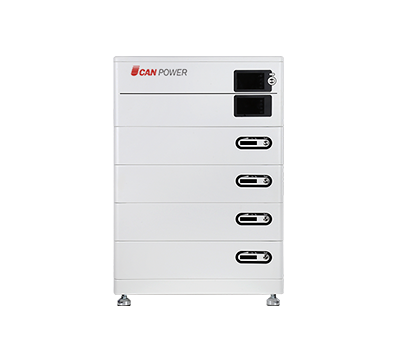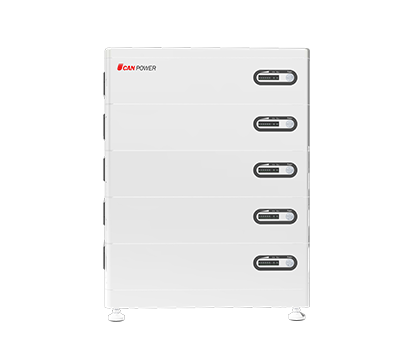I. Introduction
A battery management system is a set of electronic components and software that monitors and controls the charging and discharging of a battery pack. The primary functions of a BMS include protecting the battery from overcharging, over-discharging, overheating, and short circuits, as well as balancing the individual cells within the pack to ensure optimal performance and longevity.
Innovative battery management systems are designed to address the limitations of traditional BMS and offer enhanced features and capabilities. These systems leverage advanced technologies such as artificial intelligence, machine learning, and the Internet of Things (IoT) to provide more accurate monitoring, improved performance, and increased safety.

II. Components of an Innovative Battery Management System
Sensors
Sensors are an essential part of an innovative BMS as they provide real-time data on various parameters such as voltage, current, temperature, and state of charge (SOC). Advanced sensors can measure these parameters with high accuracy and resolution, enabling the BMS to make more informed decisions about battery management.
Some innovative BMS use multiple sensors to provide redundancy and improve reliability. For example, a system may use both voltage and current sensors to accurately determine the SOC of the battery.
In addition to traditional sensors, some innovative BMS incorporate new types of sensors such as those that can detect internal faults within the battery cells or measure the health and degradation of the battery over time.
Microcontrollers and Processors
The microcontroller or processor is the brain of the BMS. It receives data from the sensors, processes it, and makes decisions about how to control the charging and discharging of the battery. Innovative BMS often use powerful microcontrollers or processors that can handle complex algorithms and perform real-time analysis of the battery data.
Some BMS use multiple microcontrollers or processors to distribute the processing load and improve performance. For example, one processor may be dedicated to monitoring the battery parameters while another processor is responsible for controlling the charging and discharging circuits.
In addition to traditional microcontrollers and processors, some innovative BMS use specialized hardware such as field-programmable gate arrays (FPGAs) or application-specific integrated circuits (ASICs) to perform specific tasks such as fast data processing or high-precision analog-to-digital conversion.

Communication Interfaces
Communication interfaces allow the BMS to communicate with other devices and systems. This is essential for applications such as electric vehicles, where the BMS needs to communicate with the vehicle's control system and charging infrastructure.
Innovative BMS often use advanced communication interfaces such as CAN bus, Ethernet, or wireless protocols such as Bluetooth or Wi-Fi. These interfaces enable real-time monitoring and control of the battery from a remote location and allow for seamless integration with other systems.
In addition to communication with external devices, some innovative BMS also support internal communication between different components within the battery pack. This can improve the reliability and performance of the system by allowing for more efficient coordination between the various components.
Power Electronics
Power electronics are used to control the flow of electricity between the battery and the load or charging source. Innovative BMS often use advanced power electronics such as high-efficiency DC-DC converters and chargers to optimize the charging and discharging process and improve energy efficiency.
Some BMS also incorporate power electronics that can perform active cell balancing. This involves redistributing the charge between the individual cells within the battery pack to ensure that all cells are at the same SOC. Active cell balancing can improve the performance and longevity of the battery by preventing overcharging or undercharging of individual cells.
In addition to traditional power electronics, some innovative BMS use new types of power devices such as wide bandgap semiconductors such as silicon carbide (SiC) or gallium nitride (GaN). These devices offer higher efficiency, faster switching speeds, and better thermal performance than traditional silicon-based power devices.
III. Features and Capabilities of Innovative Battery Management Systems
Advanced Monitoring and Diagnostics
Innovative BMS offer more advanced monitoring and diagnostics capabilities than traditional systems. They can provide real-time data on multiple parameters such as voltage, current, temperature, SOC, and internal resistance of the battery cells.
Some BMS use machine learning algorithms to analyze the battery data and detect early signs of degradation or faults. This can help prevent failures and extend the lifespan of the battery.
In addition to monitoring the battery parameters, some innovative BMS can also monitor the environment around the battery. For example, they may detect temperature and humidity changes or vibrations that could affect the battery performance.

Intelligent Charging and Discharging
Innovative BMS can optimize the charging and discharging process to improve energy efficiency and extend the battery lifespan. They can adjust the charging current and voltage based on the battery's state of charge, temperature, and other factors.
Some BMS use intelligent charging algorithms such as pulse charging or multi-stage charging to reduce charging time and improve battery performance. They can also control the discharging process to prevent over-discharging and extend the battery's run time.
In addition to optimizing the charging and discharging process for a single battery, some innovative BMS can also manage multiple batteries in a battery pack. They can balance the charge between the individual cells and ensure that all batteries are charged and discharged evenly.
Safety Features
Safety is a top priority in battery management systems. Innovative BMS offer enhanced safety features such as overcharge protection, over-discharge protection, over-temperature protection, and short circuit protection.
Some BMS use advanced safety algorithms such as thermal runaway detection and prevention. These algorithms can detect when a battery cell is about to enter a thermal runaway state and take proactive measures to prevent a catastrophic failure.
In addition to traditional safety features, some innovative BMS also incorporate features such as fire suppression or explosion-proof enclosures. These features can help protect people and property in the event of a battery failure.
Remote Monitoring and Control
Innovative BMS often support remote monitoring and control. This allows users to monitor the battery's status and performance from a remote location using a computer, smartphone, or other device.
Remote monitoring can provide real-time alerts in case of a problem with the battery. Users can also remotely control the charging and discharging process or perform diagnostics and maintenance tasks.
In addition to remote monitoring and control, some innovative BMS can also be integrated with cloud-based platforms. This allows for centralized management of multiple batteries and enables advanced analytics and reporting.
IV. Applications of Innovative Battery Management Systems
Electric Vehicles
Battery management systems are essential for electric vehicles as they ensure the safe and efficient operation of the vehicle's battery pack. Innovative BMS can improve the range, performance, and reliability of electric vehicles by optimizing the charging and discharging process and providing advanced safety features.
Some electric vehicles use advanced BMS that can communicate with the vehicle's control system and charging infrastructure. This enables features such as fast charging, regenerative braking, and vehicle-to-grid (V2G) integration.
In addition to electric cars, innovative BMS are also being developed for electric buses, trucks, and motorcycles. These applications require BMS that can handle larger battery packs and higher power demands.
Renewable Energy Storage
Battery storage is an important part of renewable energy systems such as solar and wind power. Innovative BMS can optimize the charging and discharging of battery storage systems to improve energy efficiency and reliability.
Some renewable energy storage systems use advanced BMS that can integrate with the grid and provide services such as peak shaving, frequency regulation, and backup power. These systems can help stabilize the grid and reduce the need for fossil fuel-based backup power.
In addition to large-scale renewable energy storage systems, innovative BMS are also being developed for residential and commercial applications. These systems can help homeowners and businesses reduce their electricity bills by storing excess renewable energy for later use.
Portable Electronics
Battery management systems are also used in portable electronics such as smartphones, laptops, and tablets. Innovative BMS can improve the battery life and performance of these devices by optimizing the charging process and reducing power consumption.
Some portable electronics use advanced BMS that can monitor the battery's health and provide alerts when the battery needs to be replaced. They can also adjust the power consumption of the device based on the battery's state of charge to extend the battery life.
In addition to traditional portable electronics, innovative BMS are also being developed for emerging applications such as wearable devices and drones. These applications require BMS that can handle small form factors and high power demands.
V. Future Trends in Innovative Battery Management Systems
Integration with Artificial Intelligence and Machine Learning
As artificial intelligence and machine learning technologies continue to advance, they are expected to play an increasingly important role in battery management systems. These technologies can be used to analyze large amounts of battery data and predict battery behavior, enabling more accurate monitoring and diagnostics.
AI-powered BMS can also optimize the charging and discharging process based on real-time data and user behavior. For example, they can learn a user's charging habits and adjust the charging schedule to minimize battery degradation.
In addition to improving battery performance, AI and machine learning can also enhance the safety of battery management systems. They can detect anomalies and potential faults in real-time and take proactive measures to prevent failures.
Wireless Charging and Energy Transfer
Wireless charging and energy transfer technologies are becoming more popular in various applications. Innovative BMS can be integrated with these technologies to provide seamless and convenient charging solutions.
Wireless BMS can eliminate the need for physical connectors and cables, reducing wear and tear on the battery and improving reliability. They can also enable features such as automatic charging and energy transfer between multiple devices.
In addition to wireless charging, some innovative BMS are also exploring energy transfer technologies such as inductive coupling and resonant charging. These technologies can provide higher charging efficiencies and longer ranges than traditional wireless charging methods.
Integration with the Internet of Things
The Internet of Things (IoT) is transforming the way we interact with devices and systems. Innovative BMS can be integrated with IoT platforms to provide real-time monitoring and control of batteries from anywhere in the world.
IoT-enabled BMS can send alerts and notifications to users in case of a problem with the battery. They can also be integrated with other IoT devices such as smart meters and home automation systems to optimize energy usage and reduce costs.
In addition to monitoring and control, IoT integration can also enable advanced analytics and reporting. This can help users understand their battery usage patterns and make informed decisions about battery management.
Sustainable and Recyclable Batteries
As concerns about the environment and sustainability continue to grow, there is a growing demand for sustainable and recyclable batteries. Innovative BMS can play a role in promoting the use of these batteries by providing efficient charging and discharging solutions and monitoring the battery's health and degradation.
Some BMS are being developed specifically for sustainable batteries such as lithium-ion batteries made from recycled materials or solid-state batteries. These BMS can optimize the performance and lifespan of these batteries while minimizing their environmental impact.
In addition to promoting the use of sustainable batteries, innovative BMS can also contribute to the development of battery recycling technologies. They can provide data on the battery's condition and performance, which can be used to optimize the recycling process and ensure that valuable materials are recovered.
In conclusion, innovative battery management systems are playing a crucial role in ensuring the efficient and safe operation of rechargeable batteries in various applications. These systems offer advanced features and capabilities such as advanced monitoring and diagnostics, intelligent charging and discharging, enhanced safety features, and remote monitoring and control. As technology continues to advance, we can expect to see even more innovative BMS that integrate with artificial intelligence, machine learning, the Internet of Things, and other emerging technologies. These systems will not only improve the performance and lifespan of batteries but also contribute to a more sustainable future by promoting the use of renewable energy and reducing waste.

